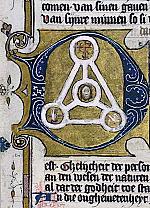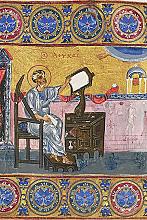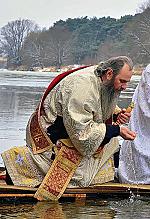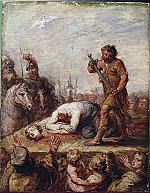Pentecost
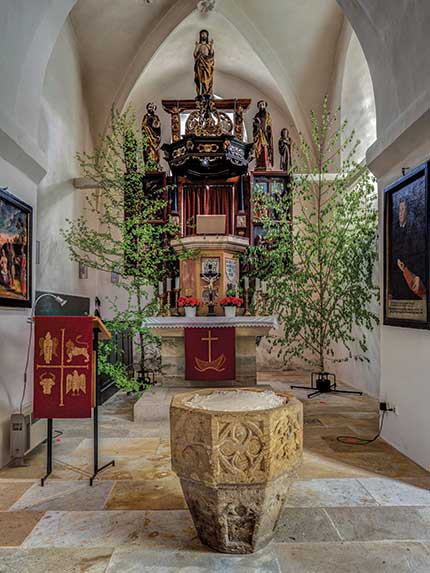
[ABOVE: Altar in the Protestant church in Busbach with Pentecost decorations, 2021—Reinhold Möller / [CC BY-SA 4.0] Wikimedia]
The Feast of Pentecost celebrates the giving of the Holy Spirit and concludes the Easter season.
Where did it come from?
Our first reference to Pentecost as a separate feast focusing on the events of Acts 2 comes from the second century. The term “Pentecost” early on referred to the entire Great Fifty Days (as “Pentecostarion” still does in the Eastern church). The name comes from the Greek for “50.” While this is the word used in the Septuagint (a Greek translation of the Old Testament) and in Acts to translate the festival of Shavuot (see pp. 4–5), and while the first Pentecost occurred when the disciples were assembled in Jerusalem to celebrate Shavuot (Acts 2:1), “Pentecost” is not the normal modern Jewish name for the feast, and the celebrations are very different.
You may (especially if you’re a fan of British literature and television) have heard Pentecost referred to as Whitsunday. Meaning “white Sunday,” this refers to the common practice in England of holding baptisms on Pentecost; those baptized were dressed in white garments. The term was first used officially in the 1549 Book of Common Prayer of the Church of England and remains particularly associated with Anglicanism.
How is the date determined?
Pentecost is always celebrated in both East and West 50 days after Easter (though the dates normally will not match up between East and West). In the West it will fall between May 10 and June 13 and in the East, May 23 and June 26.
Theological themes
The major theme of Pentecost is, of course, the descent of the Holy Spirit on the disciples in Acts 2 and the sermon they preached that was understood by all and brought nearly 3,000 people into the company of followers of the Way (Acts 2:41). For this reason Western Christians sometimes refer to it as the “birthday of the church.” The Sundays after Pentecost are, strictly speaking, considered to be “Ordinary Time” (see pp. 17 and 42–44), but the day also looks toward how the Christian community, animated by the Spirit, moved outward into the world.
Colors
Pentecost is celebrated with red in the West and green in the East.
Customs
In the West, Pentecost is normally the last day for some of the special liturgical practices of the Easter season—Easter canticles, the paschal candle, the absence of confession. It is also a key day for baptisms. Sanctuary decorations feature flowers, greenery, doves, and lots of red; often the congregation is encouraged to wear red as well! While confirmation services occur year-round, Pentecost is a particularly appropriate day for them. The hymn “Veni Creator Spiritus” or one of its English translations is often sung, and Acts 2:1–11 is sometimes read in multiple languages. Although less common now, sometimes live doves are released in churches.
In the East, Pentecost Sunday also incorporates a celebration of the Holy Trinity (in the West this is a separate Sunday, which we’ll talk about in the next section). The feast is considered to last for three days—Pentecost or Trinity Sunday, Spirit Monday, and the Third Day of the Trinity. (These days have also sometimes been observed as liturgical or public holidays in the West.) CH
Some things to do at home
• Read and discuss the Scripture passage about the coming of Pentecost and the birth of the early church in Acts 2.
• Study art that depicts the Feast of Pentecost (many artworks explore that theme).
• Eat a festive meal, preferably something incorporating white, for Whitsunday, and red for the tongues of fire.
By Jennifer Woodruff Tait
[Christian History originally published this article in Christian History Issue #156+ in 2025]
Jennifer Woodruff Tait is Senior Editor of CH magazineNext articles
Trinity, All Saints, Christ the King
Special prayers and offices devoted to the doctrine of the Trinity date back as far as the fourth-century Arian controversy
Jennifer Woodruff TaitOrdinary Time, especially Sundays after Pentecost
The term “ordinary” refers to the ordinal numbers used in counting Sundays (First, Second, Third, etc.).
Jennifer Woodruff TaitCelebrating the saints: the sanctoral cycle
Saints are normally honored on the anniversary of their death
Jennifer Woodruff TaitSupport us
Christian History Institute (CHI) is a non-profit Pennsylvania corporation founded in 1982. Your donations support the continuation of this ministry
Donate



